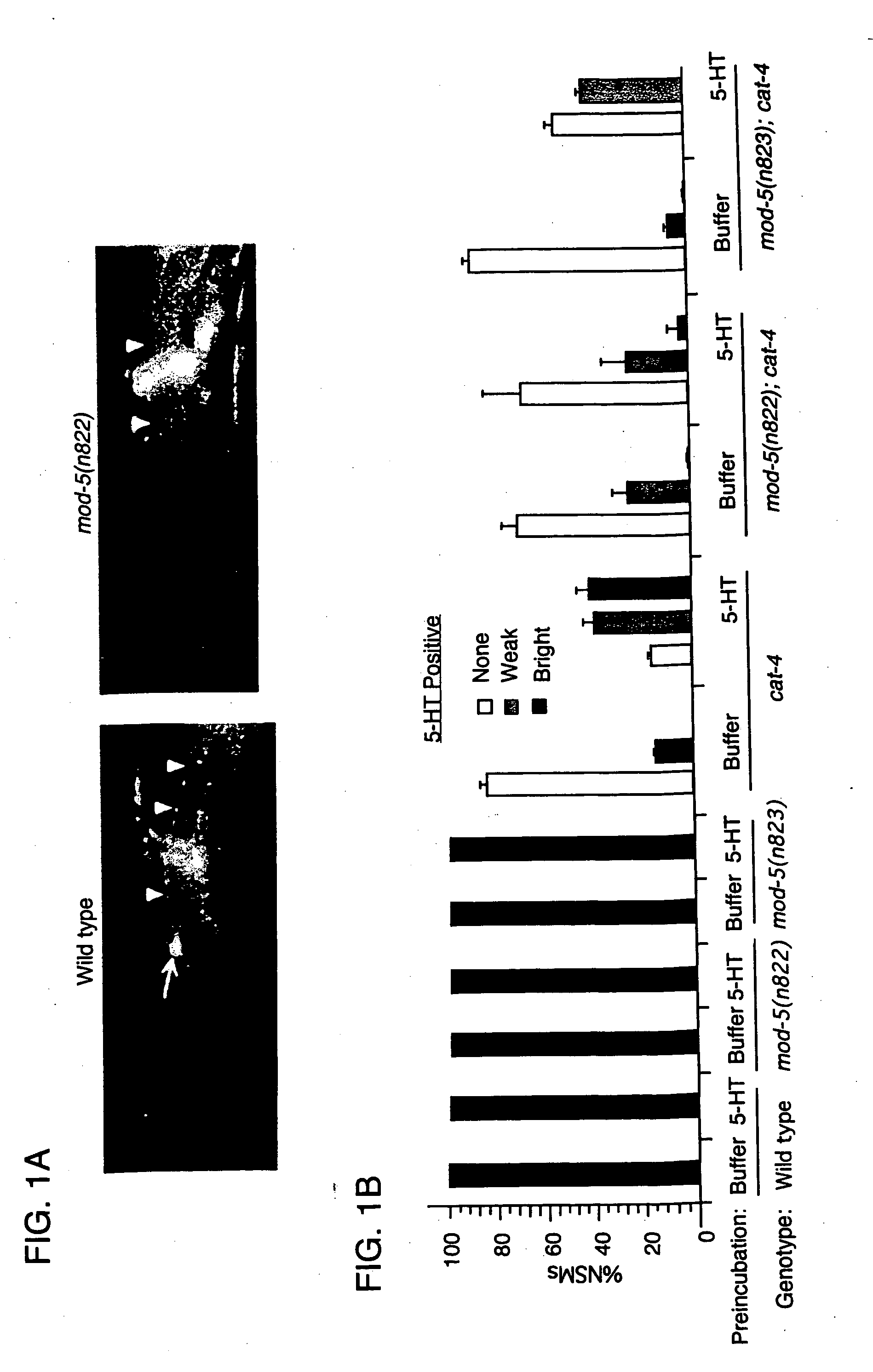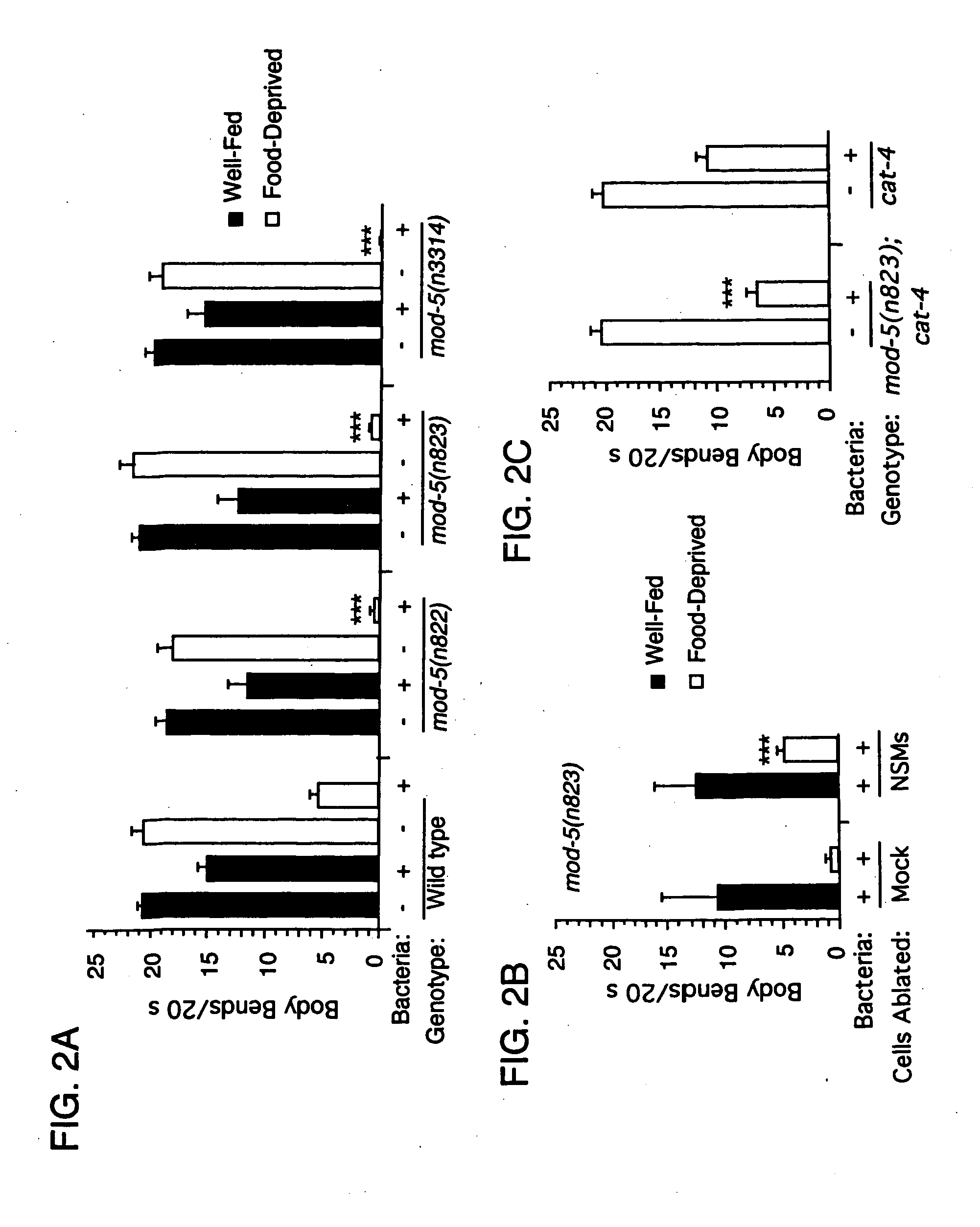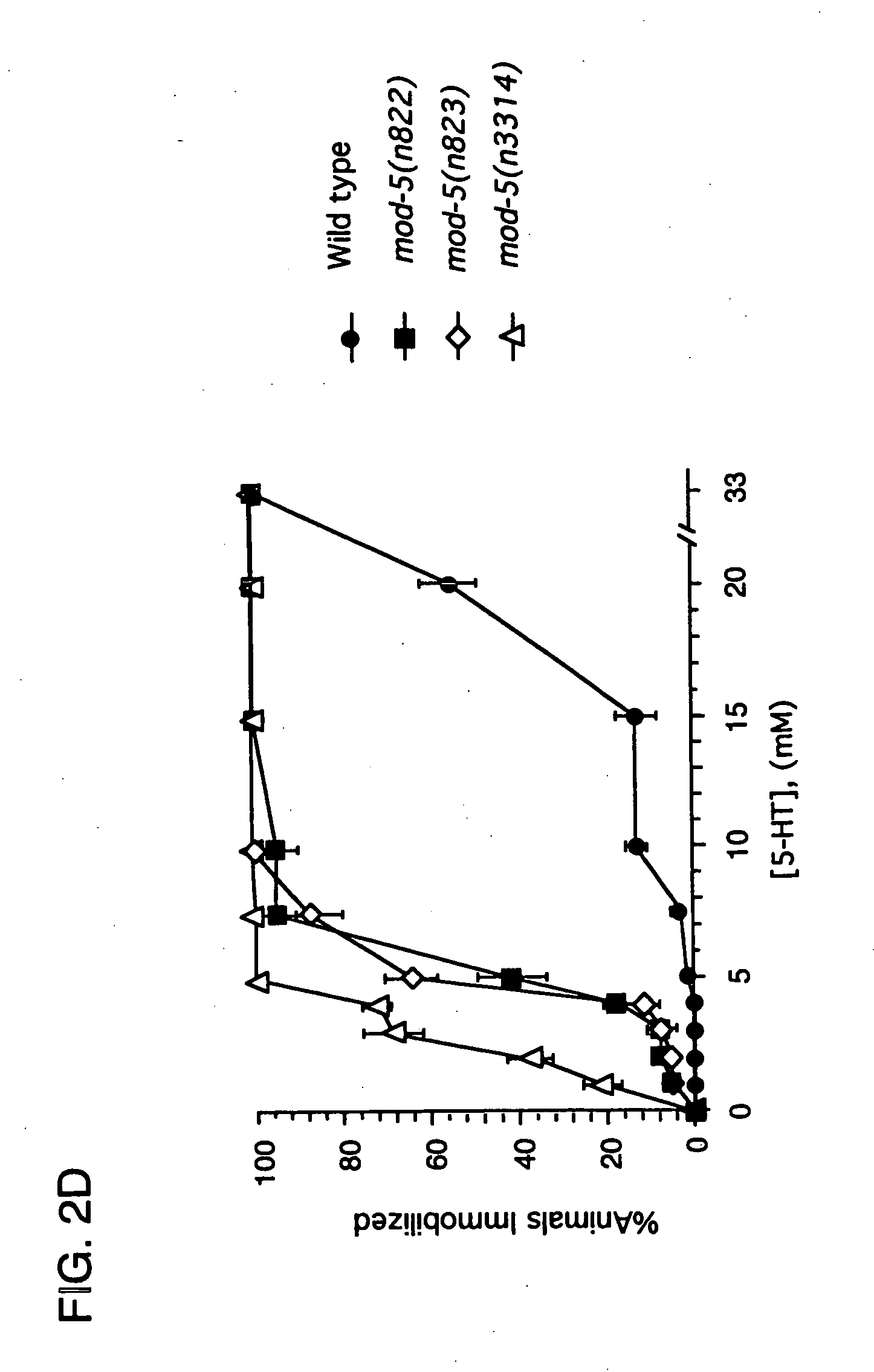CeSERT genes, proteins, and modulatory compounds
- Summary
- Abstract
- Description
- Claims
- Application Information
AI Technical Summary
Benefits of technology
Problems solved by technology
Method used
Image
Examples
example 1
Identification of a Compound that Modulates the Biological Activity of a Nematode Serotonin Reuptake Transporter in a Liquid Locomotion Assay
[0145] A nematode expressing either a wild-type or mutant C. elegans CeSERT gene, such as CeSERT(n823), CeSERT(n822), or CeSERT(n3314), is exposed to a test compound. The test compound is obtained from any number of sources, as described above, and each test compound is used in this assay at a variety of concentrations in order to determine the optimal dose that modulates the biological activity of a nematode serotonin reuptake transporter. Exposure of a nematode to a test compound is achieved by placing the desired test compound into a well of a 96-well polystyrene plate, followed by placing 20 nematodes into each well containing a test compound. After 5 to 20 minutes, the number of non-swimming nematodes is determined by viewing the worms under a dissecting microscope. This number is compared to the number of nematodes not swimming in a wel...
example 2
Identification of a Compound that Modulates the Biological Activity of a Mammalian Serotonin Reuptake Transporter in a Liquid Locomotion Assay
[0147] Transgenic nematodes in which the endogenous CeSERT gene is mutated and a mammalian CeSERT gene, for example, hSERT is expressed, is generated using standard techniques known to those skilled in the fields of nematode genetics and molecular biology. The nematodes are exposed to various concentrations of a test compound derived from any number of sources, as described above. Exposure of the nematodes to a test compound is achieved by placing the desired test compound into a well of a 96-well polystyrene plate, followed by placing 20 nematodes into each well containing a test compound. After 5 to 20 minutes, the number of nematodes not swimming is determined by viewing the nematodes under a microscope. This number is compared to the number of non-swimming transgenic nematodes expressing the same mammalian CeSERT gene in a well to which ...
example 3
Determination as to Whether an Identified Compound has a Secondary Target
[0148] Any compound identified to modulate the biological activity of a serotonin reuptake transporter using the assays described above may be further tested to determine if it also has a secondary target. To make this determination, a nematode expressing a mutated serotonin reuptake transporter is provided. This mutated serotonin reuptake transporter may be, for example, mutated CeSERT or hSERT and may have a reduced capacity to take up serotonin relative the wild-type protein.
[0149] Nematodes expressing a mutated serotonin reuptake transporter are exposed to the compound to be tested for a secondary target. Exposure of the nematodes to such a compound, is achieved by placing the compound into a well of a 96-well polystyrene plate, followed placing 20 nematodes into the same well. After 5 to 20 minutes, the biological activity of the nematodes exposed to the compound is measured and compared to the biologic...
PUM
| Property | Measurement | Unit |
|---|---|---|
| Concentration | aaaaa | aaaaa |
Abstract
Description
Claims
Application Information
 Login to View More
Login to View More - R&D
- Intellectual Property
- Life Sciences
- Materials
- Tech Scout
- Unparalleled Data Quality
- Higher Quality Content
- 60% Fewer Hallucinations
Browse by: Latest US Patents, China's latest patents, Technical Efficacy Thesaurus, Application Domain, Technology Topic, Popular Technical Reports.
© 2025 PatSnap. All rights reserved.Legal|Privacy policy|Modern Slavery Act Transparency Statement|Sitemap|About US| Contact US: help@patsnap.com



